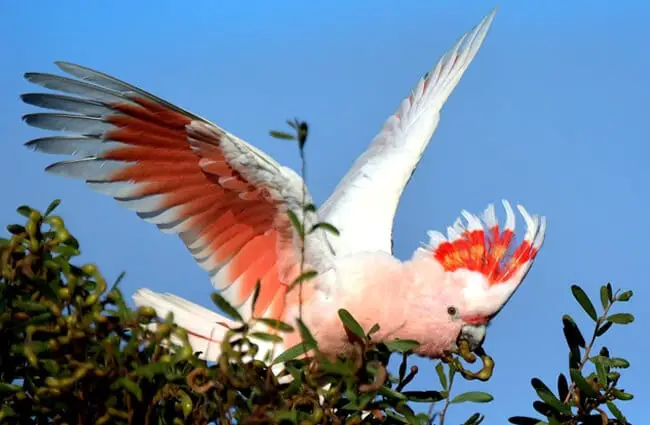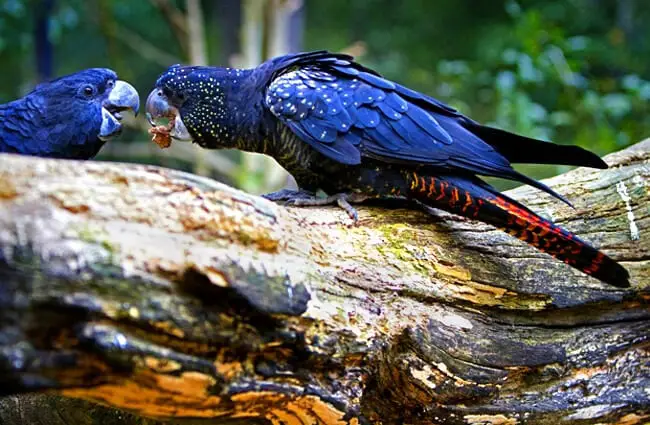The Wonderful World of Cockatoos
Cockatoos, members of the parrot family, are renowned for their striking appearance, intelligence, and captivating personalities. These charismatic birds, native to the Australian continent, the islands of the Indo-Australian archipelago, and parts of New Guinea, hold a special place in both the natural world and human culture. This comprehensive guide delves into the fascinating lives of cockatoos, exploring their evolution, habitat, behavior, and everything in between.

Understanding Cockatoo Biology
Cockatoos are easily recognizable by their prominent crest, a display feature used in communication, and their strong, curved beaks adapted for cracking nuts and seeds. Their plumage is typically white, grey, or black, although some species exhibit splashes of red, yellow, or blue. There are 21 different species of cockatoo, varying in size from the diminutive Galah to the imposing Sulphur Crested Cockatoo. These birds exhibit sexual dimorphism only to a very limited extent; generally, males are slightly larger than females.
Evolutionary History
The evolutionary history of cockatoos is a complex one, tracing back millions of years. Fossil evidence suggests that parrot-like birds existed as early as the Eocene epoch. Cockatoos are believed to have diverged from other parrot lineages relatively early, developing unique characteristics like the crest and robust beak. Their origins likely lie in the ancient supercontinent of Gondwana, explaining their current distribution across Australia, New Guinea, and Indonesia.
Habitat and Distribution
Cockatoos are found in a diverse range of habitats, including rainforests, eucalyptus forests, woodlands, and grasslands. The majority of species inhabit Australia, but several are native to Indonesian islands like Sulawesi, Sumba, and Timor. Their adaptability allows them to thrive in various environments, provided there is adequate food and nesting sites. Some species, like the Palm Cockatoo, are highly specialized to specific habitats, in this case the rainforests of New Guinea and northeastern Australia.

Cockatoo Behavior and Ecology
Diet and Foraging
Cockatoos are primarily herbivores, with a diet consisting of seeds, nuts, fruits, roots, and occasionally insects and larvae. Their powerful beaks are perfectly suited for cracking even the toughest shells. They are often observed foraging in flocks, which provides protection and increases foraging efficiency. Some species, like the Pink Cockatoo, are known to dig for roots and bulbs, while others specialize in feeding on particular types of eucalyptus seeds.
Social Structure and Communication
Most cockatoo species are highly social birds, forming strong pair bonds that often last a lifetime. They live in flocks that can range from a few individuals to hundreds of birds. Communication is achieved through a variety of vocalizations, body language, and crest displays. Loud screeching calls are common, used for maintaining contact, warning of danger, and attracting mates. The raising and lowering of the crest conveys different emotional states, like excitement, aggression, or submission.
Mating and Reproduction
Cockatoos typically breed once a year, usually during the austral spring and summer. They are cavity nesters, meaning they build their nests in hollows in trees. Both parents participate in excavating the nest and incubating the eggs. Clutch size varies depending on the species, but typically ranges from one to three eggs. Chicks are altricial, meaning they are born helpless and require extensive parental care. Young birds remain dependent on their parents for several months, learning essential foraging and social skills.

Cockatoos and the Ecosystem
Ecological Role
Cockatoos play a vital role in maintaining the health of their ecosystems. As seed dispersers, they help to regenerate forests and woodlands. Their foraging activities also help to control insect populations and promote plant diversity. They are a food source for predators, such as eagles and snakes, though their loud calls and strong beaks offer some protection. In some areas, they can also have a significant impact on agriculture, occasionally damaging crops.
Interactions with Other Animals
Cockatoos interact with a variety of other animal species. They often forage alongside other parrot species and honeyeaters, sharing food resources. They compete with other seed-eating birds and mammals for food. They also have complex relationships with invertebrates, consuming insects and larvae while also being hosts to parasites. They are occasionally preyed upon by larger birds of prey and snakes.

Cockatoos and Humans
Cultural Significance
Cockatoos hold a significant place in the cultures of Indigenous Australians. They feature prominently in Dreamtime stories, art, and ceremonies. The birds are often seen as symbols of intelligence, beauty, and spiritual power. Their feathers are used in traditional adornments and ceremonies. They also feature in the folklore of other cultures, often associated with good luck and prosperity.
Conservation Status and Threats
Several cockatoo species are facing conservation challenges due to habitat loss, illegal trapping, and climate change. The Palm Cockatoo and the Black Palm Cockatoo are particularly vulnerable, classified as endangered by the International Union for Conservation of Nature (IUCN). Habitat destruction due to logging and agriculture is a major threat. Illegal trapping for the pet trade also continues to impact populations. Climate change is altering habitats and food availability, exacerbating existing threats.

Encountering Cockatoos in the Wild
If you are fortunate enough to encounter a cockatoo in the wild, observe it from a distance and avoid disturbing its natural behavior. Do not attempt to feed or approach the bird. Keep pets under control and avoid making loud noises. Report any sightings of injured or distressed birds to local wildlife authorities. Respect their habitat and contribute to conservation efforts.
Caring for Cockatoos in Captivity
Cockatoos are long lived and demanding pets. They require spacious enclosures, a varied diet, and plenty of enrichment to prevent boredom and behavioral problems. They are highly social and require regular interaction with their owners. Provide plenty of toys, climbing structures, and opportunities for foraging. Regular veterinary check-ups are essential to maintain their health. Be prepared to provide a lifetime of care, as cockatoos can live for over 80 years.

Fascinating Cockatoo Facts
- Cockatoos have a specialized oil gland called the uropygial gland that they use to waterproof their feathers.
- They can mimic human speech and other sounds, though their vocalizations are often distorted.
- Cockatoos have zygodactyl feet, meaning they have two toes pointing forward and two toes pointing backward, which helps them to grip branches and climb.
- They are known for their playful behavior, often engaging in games and acrobatics.
- Some species of cockatoo are capable of solving complex puzzles and using tools.
Cockatoos are truly remarkable creatures, captivating us with their beauty, intelligence, and charm. By understanding their biology, behavior, and ecological role, we can better appreciate these magnificent birds and ensure their survival for generations to come.

![Red Angus Closeup of a beautiful Red Angus cowPhoto by: U.S. Department of Agriculture [pubic domain]https://creativecommons.org/licenses/by/2.0/](https://animals.net/wp-content/uploads/2020/03/Red-Angus-4-238x178.jpg)




![Red Angus Closeup of a beautiful Red Angus cowPhoto by: U.S. Department of Agriculture [pubic domain]https://creativecommons.org/licenses/by/2.0/](https://animals.net/wp-content/uploads/2020/03/Red-Angus-4-100x75.jpg)

